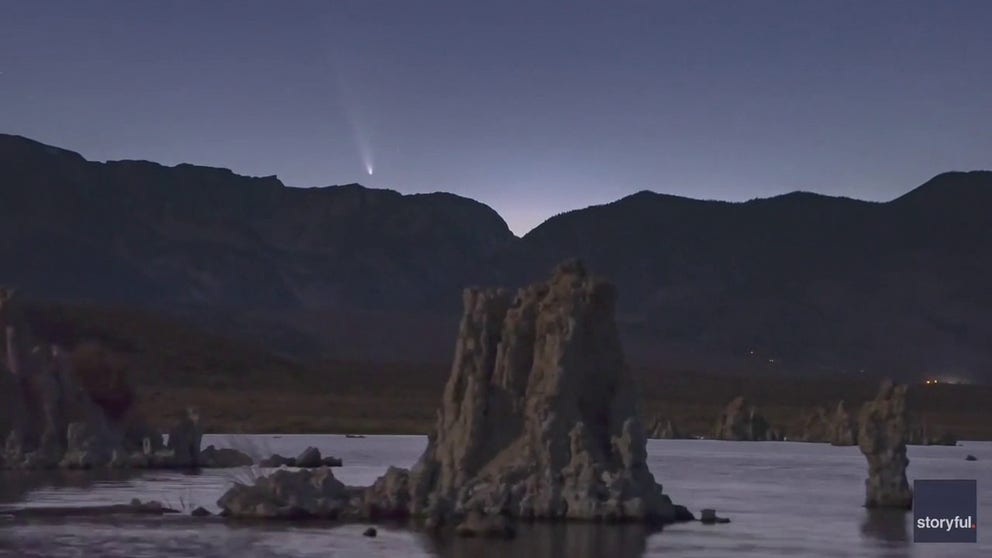Most anticipated comet of the year makes closest approach to Earth
NASA says when a comet approaches the Sun, the space matter gets warmer and causes a glowing that can extend millions of miles. C/2023 A3 Tsuchinshan-ATLAS was originally discovered in 2023.
Watch: Comet C/2023 A3 streaks across California sky
A once-in-80,000-year sight made its closest approach to Earth this weekend, and a stunning video recorded in California shows Comet C/2023 A3 streaking across the night sky.
A once-in-80,000-year sight made its closest approach to Earth this weekend before heading into the vast abyss of outer space.
Comet C/2023 A3 Tsuchinshan-Atlas made its closest approach to the Sun in September before passing within 44 million of Earth on Saturday.
Due to its proximity, the celestial object will appear in the western sky after sunset each evening until around mid- to late-month.
NASA astronaut photographs comet shooting by Earth from space station
NASA Astronaut Matthew Dominick recorded this video of Comet Tsuchinshan-ATLAS just above the horizon as the Northern lights danced above Earth. The beautiful video was taken from about 200 miles above Earth from the International Space Station.
"Comet C/2023 A3 is no threat to Earth," Peter Veres, a research scientist at the Minor Planet Center, previously told FOX Weather. "We know the comet’s orbit well. The orbit is becoming better and better with more and more astrometric observations incoming to our center – the MPC."
The celestial object was only recently discovered in 2023 when observers at China’s Tsuchinshan Observatory were conducting routine monitoring.
SEE THE OBJECTS HUMANS LEFT BEHIND ON THE MOON
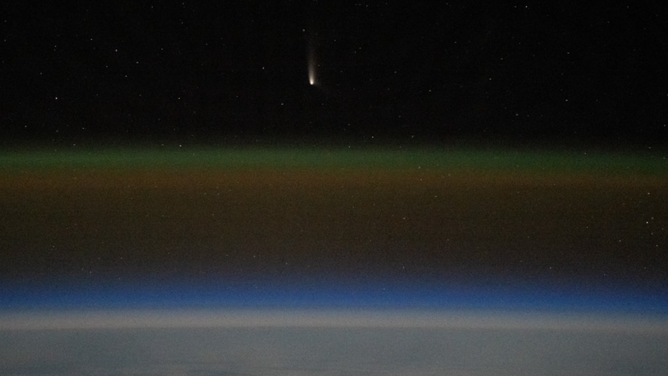
View of comet C/2023 A3 Tsuchinshan-ATLAS from the International Space Station.
(NASA)
Astronauts aboard the International Space Station have also observed the Tsuchinshan-Atlas comet on its journey around the Sun.
The space station captured a photo of the comet on Sept. 19, showing its dusty tail in the vast darkness of outer space.
Astronomers say the closer a comet gets to the Sun, the longer the tail tends to grow.
Comets are simply the remnants of the solar system’s formation, which took place approximately 4.5 billion years ago, and are composed of a mixture of ice, dust, rock and gases.
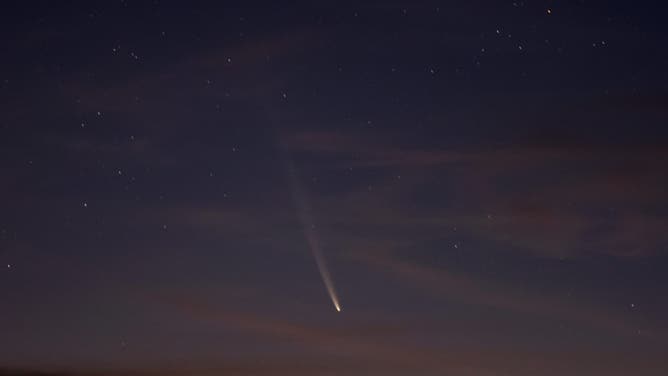
TOPSHOT - Comet C2023 A3 Tsuchinshan-Atlas is seen over the hills near the village of Aguas Blancas, Lavalleja Department, Uruguay, at dawn on September 28, 2024.
(Mariana SUAREZ / AFP / Getty Images)
"Some comets do not survive close encounters with the Sun. If they get too close, radiation and gravitational forces may disintegrate them completely. Tsuchinshan-ATLAS did not suffer this fate, but another comet astronomers were watching, C/2024 S1 ATLAS, may have," NASA stated.
NASA DEVELOPS "MOON DUSTER" TO ZAP AWAY LUNAR DUST
The celestial feature will likely be visible until the next full Moon cycle approaches, which is the full Hunter’s Moon on Oct. 17.
Based on orbital calculations, astronomers believe once the comet leaves Earth’s sight, it could be another 80,000 years before the comet is visible again if it survives its voyage around the solar system.
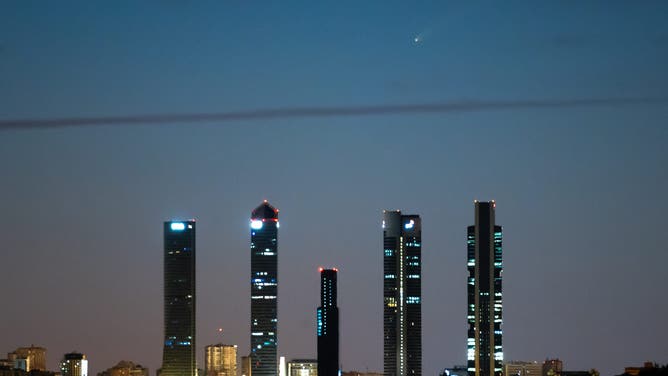
MADRID, SPAIN - 2024/09/28: Comet C/2023 A3 (TsuchinshanATLAS) called also "the comet of the century" is seen crossing the sky over the skyscrapers of Madrid known as the Four Towers Business Area.
(Marcos del Mazo/LightRocket / Getty Images)
If you miss the Tsuchinshan-Atlas comet, not too many celestial events are left in the calendar year, with three full Moons and a close bypass with Jupiter, which will all occur before the winter solstice.
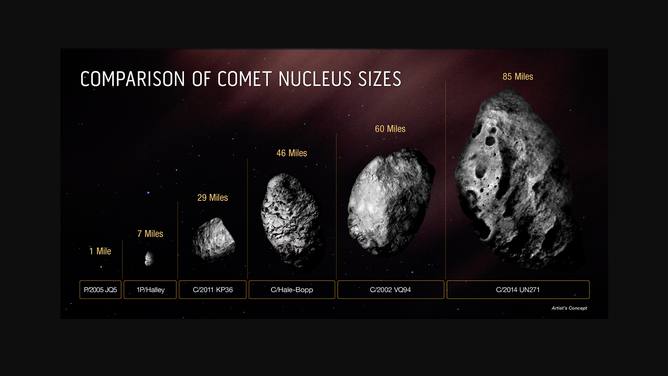
C/2014 UN271 (Bernardinelli-Bernstein) Telescope is barreling towards the heart of our solar system.
(NASA)
